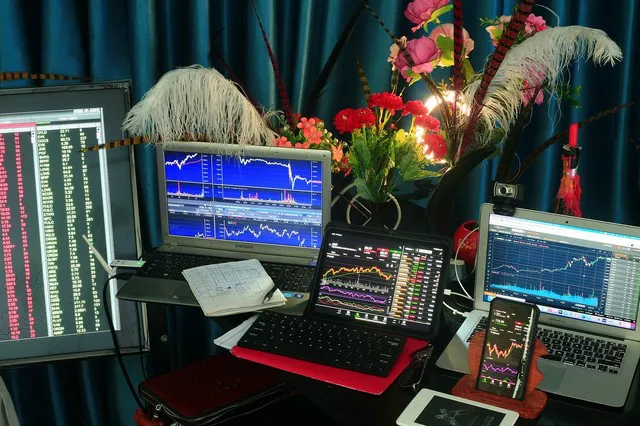Day trading futures offers the potential for exciting opportunities and substantial profits in the financial markets. However, it requires a solid understanding of the intricacies involved and a well-defined strategy. In this comprehensive guide, we will take you through a step-by-step approach to day trading futures, equipping you with the knowledge and tools necessary to navigate the markets with confidence and increase your chances of success.
Understanding the Basics of Futures Trading
Futures contracts serve as agreements to buy or sell assets (such as commodities, stock indexes, currencies, or interest rates) at predetermined prices and dates in the future. To embark on successful day trading futures, it is crucial to grasp the fundamentals of this financial instrument.
Definition and Function of Futures Contracts:
Futures contracts represent standardized agreements to buy or sell specific assets at a future date and price. They allow market participants to hedge against price volatility or speculate on price movements. Understanding the key components of a futures contract is vital:
Underlying Asset: Each futures contract is based on a specific underlying asset, such as a stock index, commodity, currency, or interest rate.
Contract Size: Futures contracts have predefined sizes, determining the quantity of the underlying asset being traded.
Expiration Date: Futures contracts have expiration dates, indicating when the contract must be fulfilled or settled.
Price: The price at which the underlying asset will be bought or sold upon contract expiration is predetermined.
Different Types of Futures Markets:
Stock Index Futures: These contracts track the performance of a specific stock index, allowing traders to speculate on the overall direction of the stock market.
Commodity Futures: Commodities like crude oil, gold, natural gas, and agricultural products provide diverse trading opportunities. Traders can capitalize on price movements influenced by supply and demand factors.
Currency Futures: Currency futures involve trading contracts based on exchange rates between different currencies. This market allows traders to speculate on currency price movements.
Interest Rate Futures: These futures contracts are based on interest rates, such as the 10-year Treasury note. Traders can profit from changing interest rate expectations.
Key Participants in the Futures Market:
Understanding the roles of different market participants is essential in day trading futures. The key participants include:
Hedgers: These participants use futures contracts to offset the risks associated with the underlying asset. For example, a farmer may use commodity futures to hedge against price fluctuations.
Speculators: Speculators aim to profit from price movements in the futures market without any underlying interest in the asset. They assume market risk in the hopes of making profitable trades.
Market Makers: Market makers provide liquidity in the futures market by constantly quoting buy and sell prices. They earn profits through the bid-ask spread.
Developing a Trading Plan
To succeed in day trading futures, it is crucial to have a well-defined trading plan. This plan should encompass your goals, trading style, timeframe, and risk management strategies.
Setting Clear Goals:
Define your trading objectives, risk tolerance, and profit expectations. Having a clear vision of what you want to achieve will guide your decision-making process and help you stay focused.
Choosing a Suitable Trading Style:
Different trading styles suit different personalities and preferences. Consider the following options:
Scalping: Involves making multiple short-term trades to capitalize on small price movements.
Momentum Trading: Focuses on trading assets that exhibit strong price trends and momentum.
Swing Trading: Captures intermediate price swings within a larger trend.
Position Trading: Involves holding trades for a longer duration, typically based on fundamental analysis.
Selecting a Trading Timeframe:
Determine whether you prefer short-term intraday trades or holding positions for a more extended period. The timeframe you choose should align with your trading style and goals.
Implementing Risk Management Strategies:
Protecting your capital is paramount in day trading. Implement the following risk management techniques:
Setting Stop-Loss Orders: Define predetermined levels at which you will exit losing trades to limit potential losses.
Position Sizing: Determine the appropriate position size for each trade based on your risk tolerance and account size.
Maintaining a Favorable Risk-Reward Ratio: Ensure that your potential reward justifies the risk you are taking on each trade.
Learning Technical Analysis
Technical analysis plays a crucial role in day trading futures. It involves analyzing price charts and using various tools and indicators to identify potential trade setups.
Candlestick Patterns:
Candlestick patterns provide valuable insights into market sentiment and potential trend reversals. Learn to recognize and interpret common candlestick patterns, such as doji, engulfing, and hammer patterns.
Support and Resistance Levels:
Identify key price levels where buying or selling pressure is expected to emerge. Support levels act as a floor for prices, while resistance levels act as a ceiling.
Moving Averages:
Moving averages smooth out price data, providing trend information and potential areas of support or resistance. Learn to use different types of moving averages, such as the simple moving average (SMA) and exponential moving average (EMA).
Oscillators:
Oscillators, such as the Relative Strength Index (RSI) and Stochastic Oscillator, help identify overbought or oversold market conditions. These indicators can signal potential trend reversals or confirm the strength of existing trends.
Practicing, Analyzing, and Adapting
Before diving into live trading, it is essential to practice your strategy in a risk-free environment. Utilize demo accounts provided by brokers to simulate real trading conditions. Analyze your trades, identify strengths, and learn from mistakes. Continuously adapt your approach based on market conditions and your own experience.
Conclusion
Mastering the art of day trading futures requires dedication, discipline, and a solid understanding of the markets. By comprehensively understanding the basics of futures trading, developing a well-defined trading plan, utilizing technical analysis, and continuously learning from practice and analysis, you can enhance your chances of success. Remember, consistency and risk management are key in navigating the volatile yet potentially rewarding world of day trading futures.


